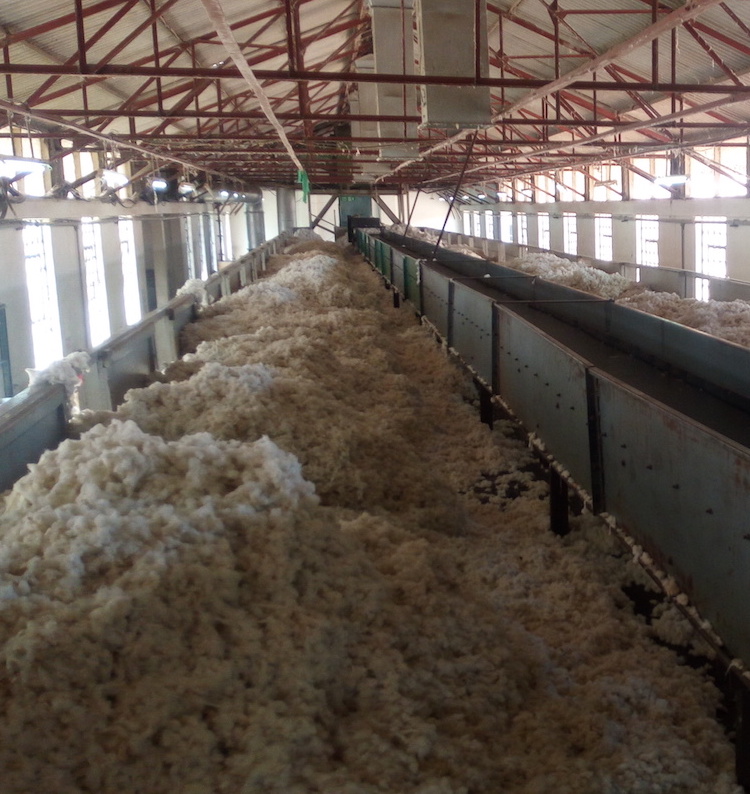Preliminary findings from the report titled “Developing Cotton by-products in Uganda” have revealed that cotton which faces competition from more profitable crops like ground nuts, rice, sesame and sugarcane fetches low profits for growers.
A simple profitability analysis for cotton and these competing crop enterprises in shillings earned per acre shows that cotton fares slightly with cassava in terms of financial yield to farmers and yet in terms of production costs as proportion of revenue, cotton takes 40 per cent far above the 11 to 24 per cent for competing crops.
Isaac Shinyekwa, a Senior Research Fellow at the Makerere University Economic Policy Research Centre (EPRC) revealed the discrepancies during a recent presentation delivered at the United Nations Conference on Trade and Development (UNCTAD) at the Golf Course Hotel in Kampala.
Shinyekwa said that much as farmers were responding to the call to increase cotton cultivation, it was way below the thresholds required to meet the current ginning capacity.
Quoting Cotton Development Organization (CDO) data, Shinyekwa noted that the trends in cotton seed production and value were high during the 2012/2013 period (Over 80,000 Metric tons) valued for over Shs40 billion and fell below 60,000 metric tons in the 2016/2017 period, occasioning Shs25-Shs30 billion.
The state of Ginning in Uganda
Shinyekwa added that trends in lint production and value indicate that Uganda realized 250,000 bales of lint in 2004/2005, fetching an estimated Shs50b. The same quantity drew Shs168b in 2011/2012 period. However, 2016/2017 saw a decline in lint production to about 150, 000 bales valued at Shs100b.
“Ugandan ginneries (39 in total, with an installed ginning capacity of close to one million bales per annum, an equivalent of 185,000 MT) currently operate at an average of only 10 % of the established capacity some are inoperable and others silent implying incapability to meet the country’s cotton needs,” he said.
Uganda, annually imports over 124 MT of absorbent cotton with two main buyers being National Medical Store (NMS) and the Joint Medical Store (JMS).
By-products not properly tapped
Cotton by-products can be used to make cooking oil, briquettes, and animal seedcake among others a market opportunity which has not been exhausted according to the EPRC maiden survey outcomes.
Cottonseed Oil
The unmet Uganda’s edible oil trade deficits are an opportunity for investment since demand for edible oil in Uganda stands at 120,000 MT against a production capacity of 40,000 MT, leaving a deficit of 80,000 MT annually.
Much as cotton seed oil has an unpleasant smell and a dark colour, refining, bleaching and deodorizing according to the findings would enable it meet market standards.
Cotton Stalks
According to Uganda Industrial Research Institute (UIRI), cotton stalk can be used in making Charcoal Briquettes and pressed wood briquettes as well as particle boards. Almost 105,000 MT of cotton stalk is generated in Uganda every year and this is burnt or used as firewood.
Animal Cottonseed cake
Cottonseed whose annual production has been between 25,000 to 45,000 MT in the last 4 four years is processed and consumed locally by mainly animal seedcake makers since Uganda is experiencing increasing demand for animal and poultry products.
These potential economic benefits are marred with challenges such as high cost of buying processing equipment, power shortages, seasonality of cotton stalks, poor storage and inadequate transportation, breakdown of machines and taxation burden.
To remedy this scenario, Shinyekwa calls for improvement of inputs provision to cotton farmers, development of the cotton by-products value chain, developing local capacities and skills to exploit the by-products, provision of credit, increasing both public and private investments, ensuring adequate power supply and review of taxes on cotton value chain.







